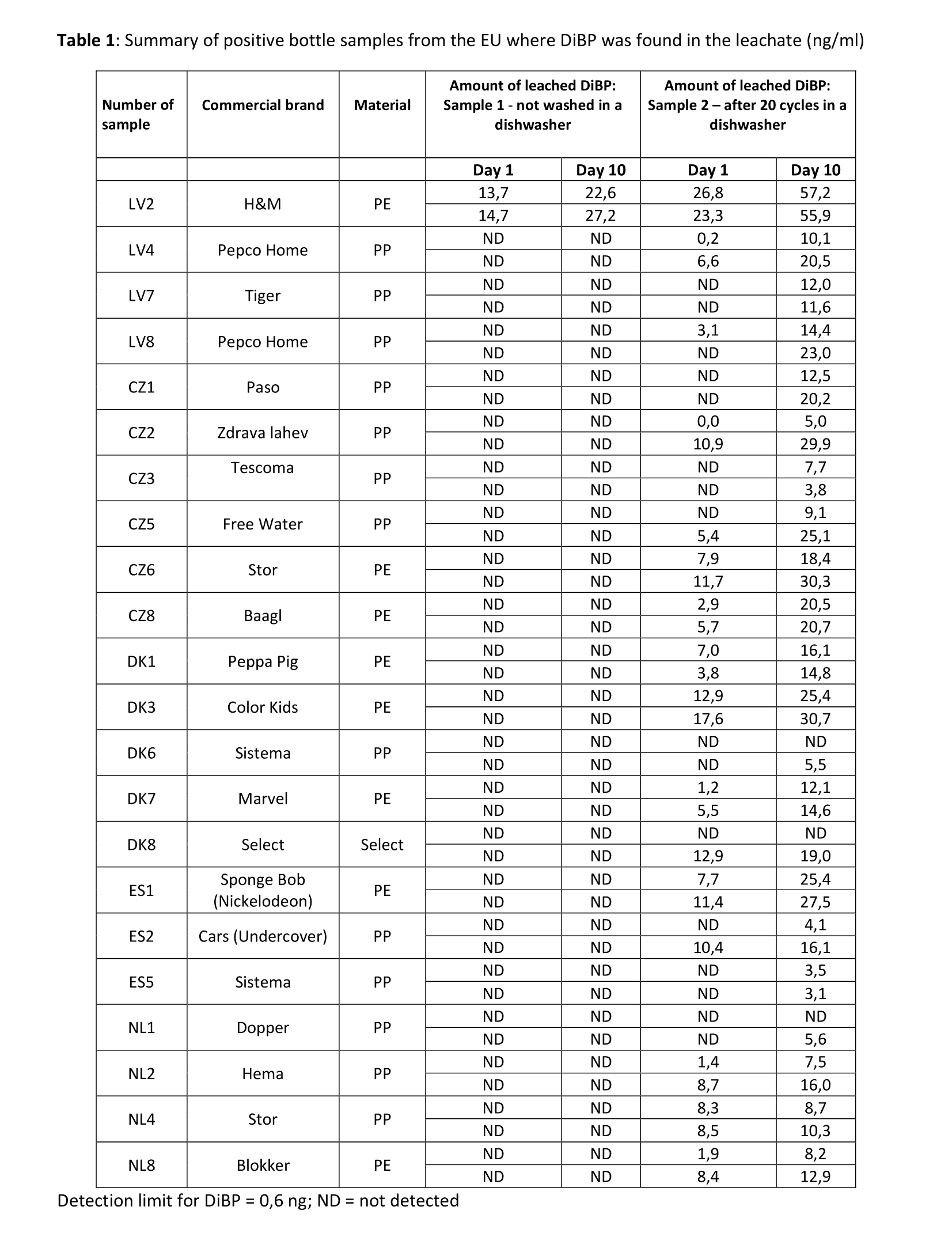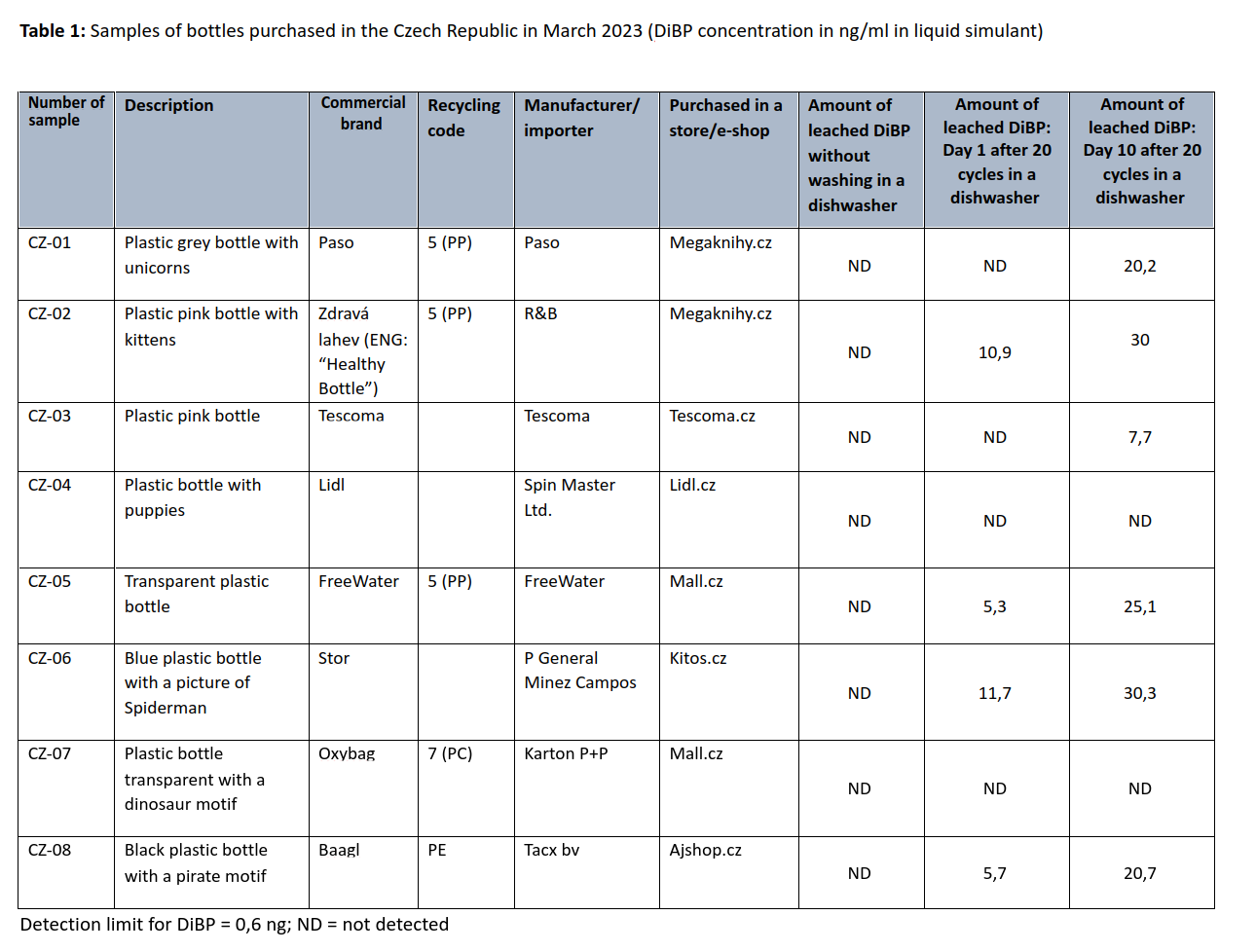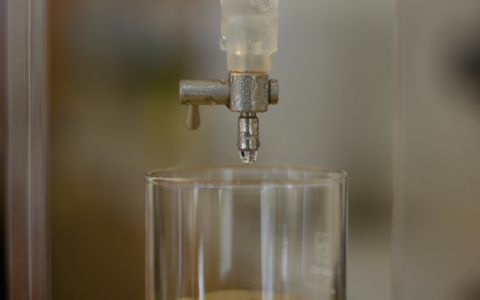Reusable plastic bottles marketed for children are leaking dangerous chemicals. This is a result of a study by McGill University in Canada, commissioned by the Dutch NGO Tegengif and co-authored by the Czech Arnika and NGOs from Denmark, Latvia and Spain.
The research looked at 39 types of water bottles bought in these countries and the chemicals that migrate into the liquid. More than half were found to contain the harmful plasticiser diisobutyl phthalate (DiBP), which children ingest when they drink from the bottle.
Summary of the study's key findings
- A targeted analysis of 36 chemicals commonly found in plastics revealed that the chemical DiBP leaches from plastic water bottles.
- After washing in a dishwasher, DiBP was found in 22 of the 39 bottles. DiBP was only found in one bottle that did not go through the dishwasher, so we conclude that dishwashing had an effect on the migration of DiBP into the used food simulant.
- Additionally, DiBP concentrations measured in the liquid were higher after 10 days than after 24 hours.
- DiBP was found only in bottles made of PE and PP, but not in bottles made of other plastics such as PET, tritan or polycarbonate.
- The use of DiBP has been restricted in the EU because it is reprotoxic. This means that it is harmful to the reproduction and development of the unborn foetus and disrupts the endocrine system.
Bottles even contain a number of unknown chemical compounds
"Many children take their plastic bottle to school every day. We know plastics contain chemicals. But we wanted to investigate whether these chemicals are also released, so that we know what children are actually ingesting," says Annelies den Boer, director of the Tegengif Foundation.
"That's why we didn't look at the plastic bottle itself, but at the liquid inside. And because many people put their reusable bottles in the dishwasher, we also tested the liquid after several washes in the dishwasher. More than half of the bottles were found to release diisobutyl phthalate (DiBP) immediately after washing in the dishwasher. Only 1 bottle released this chemical before washing in the dishwasher. The study also showed that the concentration of DiBP increased the longer the liquid was in the bottle," explains den Boer.
The second key finding of the study via the untargeted analyses was that of the hundreds of chemicals detected in the food simulant, only a small fraction could be identified. The rest of the detected signals represent unknown chemicals that were impossible to specify, even though McGill University searched several chemical libraries containing thousands of known chemicals.
"More than the fact that plastic bottles release DiBP in very low concentrations, we were struck by the fact that plastic food contact materials are releasing substances for which we have no information. Unfortunately, legislation very often does not cover the full range of hazardous substances released from plastics in particular. For many of them, there is also no data on their toxicity," warns Karolína Brabcová, an expert on toxic substances in consumer goods at Arnika.

The health risk is the "omnipresence” of toxic substances
Food contact materials, including the bottles analysed, are subject to European legislation and must meet strict safety requirements - the detected DiBP together with other phthalates (DBP+BBP+DEHP) must not exceed a concentration of 0.6 mg/kg (600 μg/g) in the liquid simulant leachate according to European Regulation (EU) 2023/1442). None of the bottles exceeded this limit - the study also measured the leaching of other phthalates. Therefore, all bottles are safe under current legislation.
"The amount of DiBP found in the liquid was below the European limit," said den Boer. "The companies are therefore complying with the legislation. Nevertheless, we are concerned about the presence of this substance. This is because children come into contact with plasticisers not only through reusable water bottles, but also through plastic toys, clothes or carpets. This is why plasticisers are also known as 'everywhere chemicals'. It is this ubiquity that increases the health risk," explains den Boer. Plasticizers such as DiBP are found in children's urine both in the Czech Republic and throughout Europe.
Arnika therefore advises parents to be careful with plastics, especially those coming in contact with food and drink. "Let's be clear: reusable plastic bottles are better than disposable ones, but if you buy a new bottle, it is better to choose stainless steel or glass. Are you going to use your plastic bottles for now? Then change the water in the bottle regularly and wash it by hand, not in the dishwasher," sums up Brabcová.

For more information, please contact Arnika's international communication officer Jan Kašpárek: This email address is being protected from spambots. You need JavaScript enabled to view it., +420 770 143 103.

The article was written with the financial support of the EU LIFE programme (LIFE21-GIE-DE-LIFEChemBee/101074245). However, the views and opinions expressed are those of the Life ChemBee project alone and do not necessarily reflect those of the European Union or the LIFE Programme. Neither the European Union nor the granting authorities can be held responsible for them.







